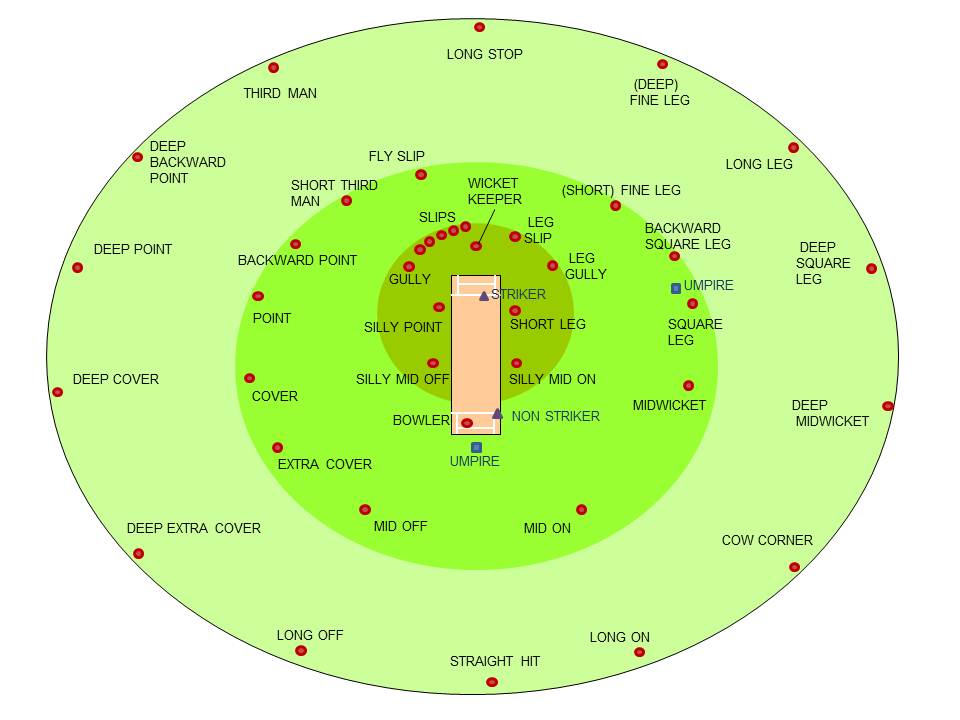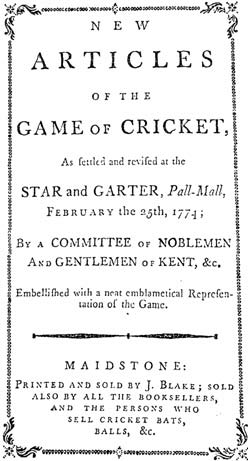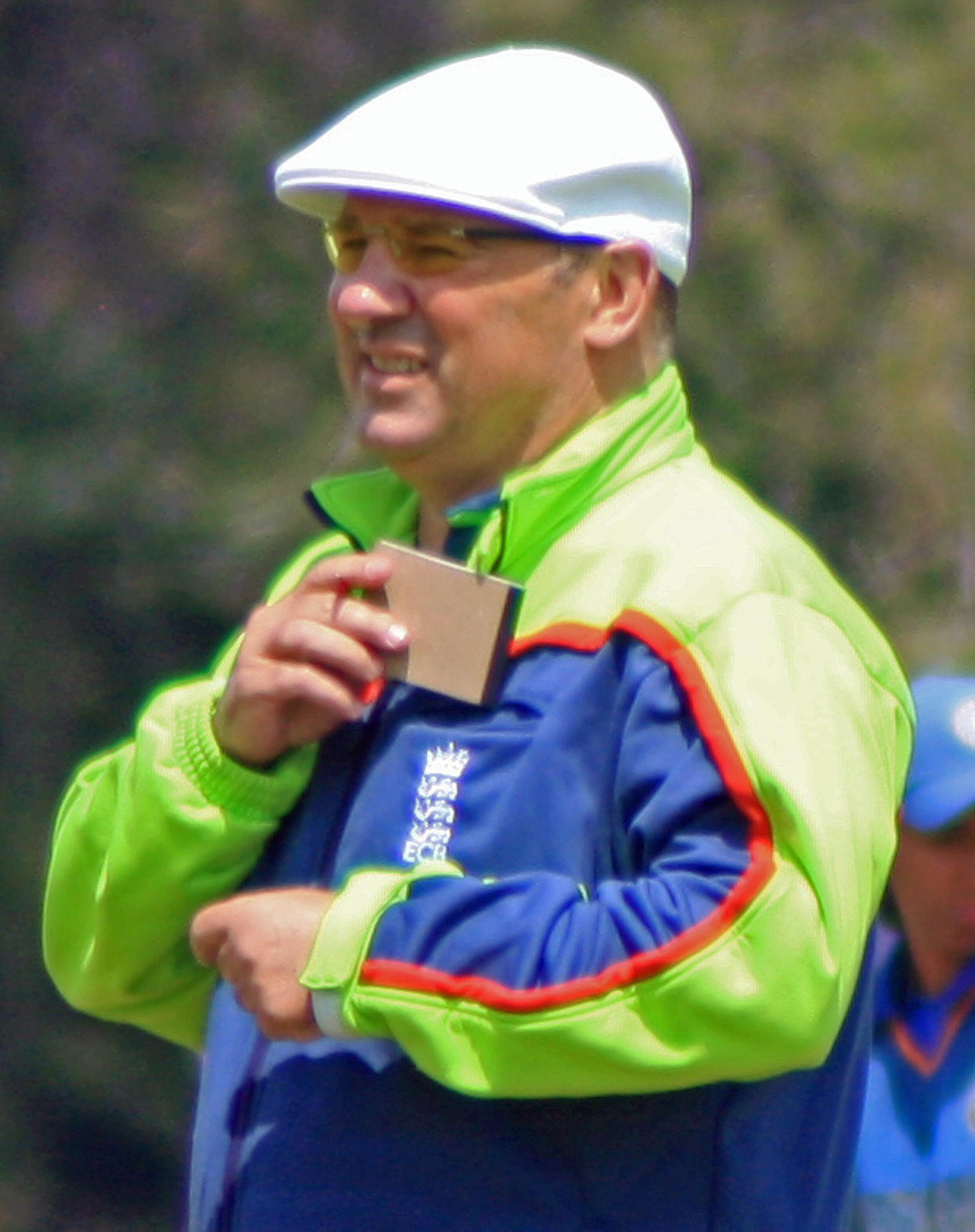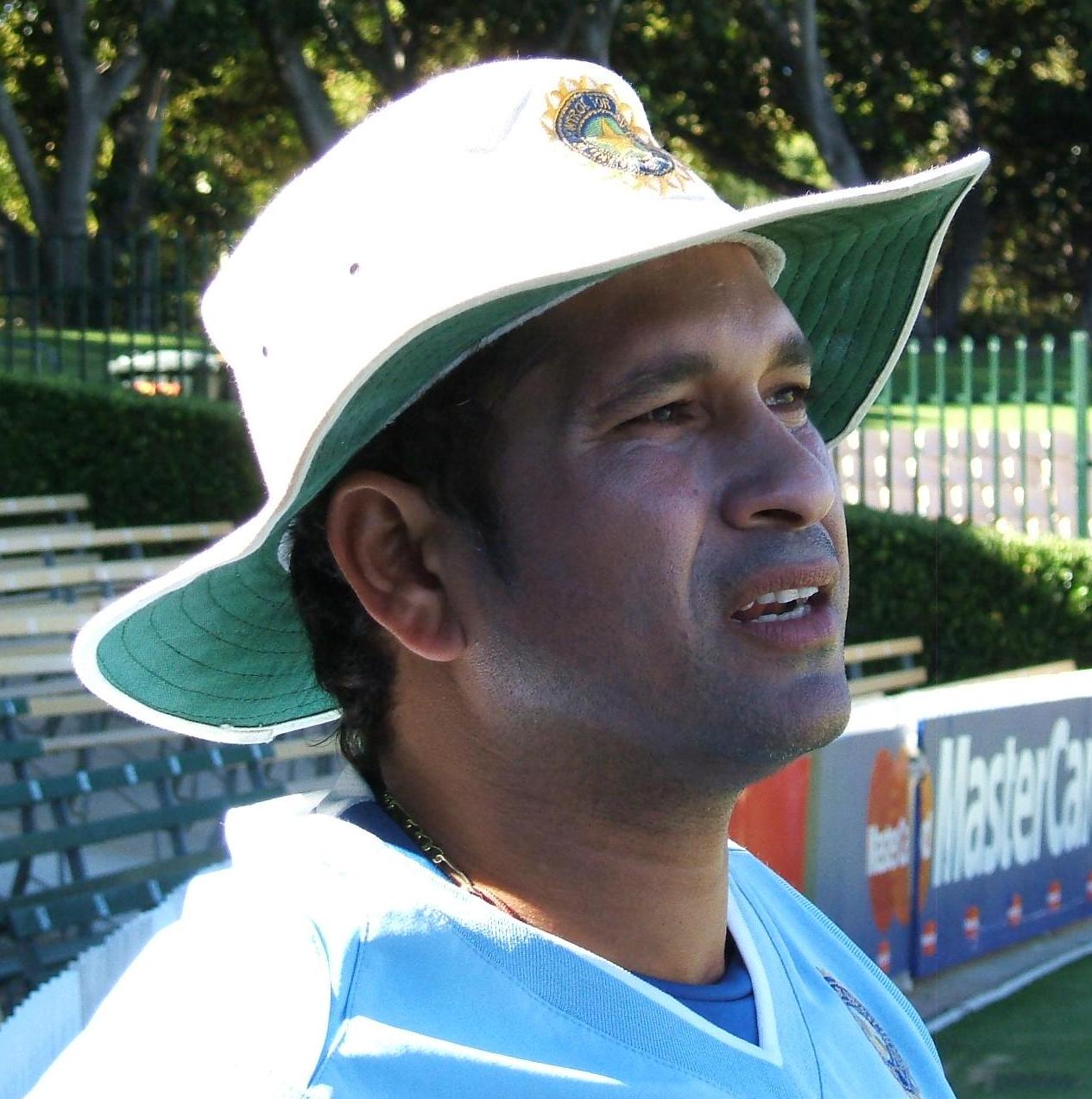|
Scorer
In cricket, a scorer is someone appointed to record all runs scored, all wickets taken and, where appropriate, the number of overs bowled. In professional games, in compliance with Law 3 of the ''Laws of Cricket'', two scorers are appointed, most often one provided by each team. The scorers have no say in whether runs are scored, wickets taken or overs bowled. This is the job of the umpires on the field of play, who signal to the scorers in cases of ambiguity such as when runs are to be given as extras rather than credited to the batsmen, or when the batsman is to be awarded a boundary 4 or 6. So that the umpire knows that they have seen each signal, the scorers are required to immediately acknowledge it. While it is possible to keep score using a pencil and plain paper, scorers often use pre-printed scoring books, and these are commercially available in many different styles. Simple score books allow the recording of each batsman's runs, their scores and mode of dismissal ... [...More Info...] [...Related Items...] OR: [Wikipedia] [Google] [Baidu] |
Bill Frindall
William Howard Frindall, (3 March 1939 – 29 January 2009) was an English cricket scorer and statistician, who was familiar to cricket followers as a member of the Test Match Special commentary team on BBC radio. He was nicknamed the Bearded Wonder (shortened to Bearders) by Brian Johnston for his ability to research the most obscure cricketing facts in moments, while continuing to keep perfect scorecards and because he had a beard. Angus Fraser described Frindall as "the doyen of cricket scorers" in his obituary in ''The Independent''.Obituary '''', 3 February 2009 Early life Frindall was born in |
Cricket
Cricket is a bat-and-ball game played between two teams of eleven players on a field at the centre of which is a pitch with a wicket at each end, each comprising two bails balanced on three stumps. The batting side scores runs by striking the ball bowled at one of the wickets with the bat and then running between the wickets, while the bowling and fielding side tries to prevent this (by preventing the ball from leaving the field, and getting the ball to either wicket) and dismiss each batter (so they are "out"). Means of dismissal include being bowled, when the ball hits the stumps and dislodges the bails, and by the fielding side either catching the ball after it is hit by the bat, but before it hits the ground, or hitting a wicket with the ball before a batter can cross the crease in front of the wicket. When ten batters have been dismissed, the innings ends and the teams swap roles. The game is adjudicated by two umpires, aided by a third umpire and match referee ... [...More Info...] [...Related Items...] OR: [Wikipedia] [Google] [Baidu] |
Johann Gottlieb Jackschon
Johann Gottlieb Jackschon (23 January 1846 – 10 July 1931) was an Australian cricket scorer. He served as scorer for the New South Wales cricket team at various times over a period of around 40 years. On several occasions, he took the innovative step of making a separate memorandum recording the number of balls faced and runs scored by each batsman off each bowler, unlike scoring in a conventional scorebook but similar to the modern linear system of scoring. Jackschon was born in Maust, in Teichland north of Cottbus, Spree-Neiße, Prussia (now in eastern Germany). He emigrated to Australia with his parents and two older sisters, arriving in Sydney in August 1852 on the brig ''Reiherstieg''. The family settled in Grafton, about north of Sydney. One of his sisters later married a police constable Henry Bassman; the other married Joseph Kempnich, who ran a sugar mill. In his earlier years, Jackschon played cricket as wicketkeeper for teams in Warwick and Albert, playing hi ... [...More Info...] [...Related Items...] OR: [Wikipedia] [Google] [Baidu] |
Umpire (cricket)
In cricket, an umpire (from the Old French ''nompere'' meaning not a peer, i.e. not a member of one of the teams, impartial) is a person who has the authority to make decisions about events on the cricket field according to the ''Laws of Cricket''. Besides making decisions about legality of delivery, appeals for wickets and general conduct of the Game in a legal manner, the umpire also keeps a record of the deliveries and announces the completion of an over. A cricket umpire is not to be confused with the referee who usually presides only over international matches and makes no decisions affecting the outcome of the game. Overview Traditionally, cricket matches have two umpires on the field, one standing at the end where the bowler delivers the ball (bowler's end), and one directly opposite the facing batsman (usually, but not always, at square leg). However, in the modern game, there may be more than two umpires; for example Test Matches have four: two on-field umpires, a thi ... [...More Info...] [...Related Items...] OR: [Wikipedia] [Google] [Baidu] |
Bill Ferguson (cricket Scorer)
William Henry Ferguson (6 June 1880 – 22 September 1957) is one of the best-known cricket scorers. For 52 years from 1905 until his death, Ferguson acted as the scorer and baggageman for Australia, England, West Indies, South Africa and New Zealand in 43 tours and 208 Test matches. He is often credited with two of the most revolutionary innovations in scoring. He developed the radial scoring chart, which shows the directions in which a batsman scored his runs. Originally called "Ferguson's charts", they are now popularly known as "wagon-wheels". He was one of the first scorers to use a linear system of scoring which, unlike the conventional system, keeps track of the balls faced by a batsman and off a particular bowler. In order to record such details, including the times of significant events during an innings, he designed his own scoring books – "which contain dat least twice as much information as any other in the world" – and had them printed at his own expense. A ... [...More Info...] [...Related Items...] OR: [Wikipedia] [Google] [Baidu] |
Laws Of Cricket
The ''Laws of Cricket'' is a code which specifies the rules of the game of cricket worldwide. The earliest known code was drafted in 1744 and, since 1788, it has been owned and maintained by its custodian, the Marylebone Cricket Club (MCC) in London. There are currently 42 Laws (always written with a capital "L") which outline all aspects of how the game is to be played. MCC has re-coded the Laws six times, the seventh and latest code being released in October 2017. The 2nd edition of the 2017 Code came into force on 1 April 2019. The first six codes prior to 2017 were all subject to interim revisions and so exist in more than one version. MCC is a private club which was formerly cricket's official governing body, a role now fulfilled by the International Cricket Council (ICC). MCC retains copyright in the Laws and only the MCC may change the Laws, although usually this is only done after close consultation with the ICC and other interested parties such as the Association of Crick ... [...More Info...] [...Related Items...] OR: [Wikipedia] [Google] [Baidu] |
Association Of Cricket Officials
The Association of Cricket Officials (ACO) is an organisation set up to represent and support cricket officials, especially umpires and scorers. It operates under the auspices of the England and Wales Cricket Board (ECB) and is often referred to as the "ECB ACO" or similar. Current membership (as of March 2015) is "near 8,000". Formation The ACO was formed on 1 January 2008 as a result of members of the Association of Cricket Umpires and Scorers (ACU&S) having voted in favour of their organisation amalgamating with the ECB Officials Association (ECB OA). When the association was formed, an Interim Board was set up to get the new organisation rolling. Roger Knight was appointed as Chairman of the Interim Board, and has remained the ACO chairman since. Membership The association has the following membership categories, with respective subscription rates, as of March 2015: *Full member: £30 direct debit / £32 cheque *Associate member: £15 / £17 *Young official or "junior m ... [...More Info...] [...Related Items...] OR: [Wikipedia] [Google] [Baidu] |
Batsman (cricket)
In cricket, batting is the act or skill of hitting the cricket ball, ball with a cricket bat, bat to score runs (cricket), runs and prevent the dismissal (cricket), loss of one's wicket. Any player who is currently batting is, since September 2021, officially referred to as a batter (historically, the terms "batsman" and "batswoman" were used), regardless of whether batting is their particular area of expertise. Batters have to adapt to various conditions when playing on different cricket pitches, especially in different countries - therefore, as well as having outstanding physical batting skills, top-level batters will have quick reflexes, excellent decision-making and be good strategists. During an innings two members of the batting side are on the pitch at any time: the one facing the current delivery from the bowler is called the striker, while the other is the non-striker. When a batter is dismissal (cricket), out, he is replaced by a team-mate. This continues until the ... [...More Info...] [...Related Items...] OR: [Wikipedia] [Google] [Baidu] |
John Atkinson Pendlington
John Atkinson Pendlington (September 1861 – 15 January 1914) was the inventor of a linear scoring system for cricket before 1893. Unlike conventional scoring systems, the linear system shows balls faced by each batsman from each bowler. Until recently, the linear system was believed to have been developed more recently by Australian scorer Bill Ferguson in around 1905. Any link between the linear scoring systems used by Ferguson and Pendlington remain unclear. Private life Pendlington was born in South Shields, County Durham, in 1861. He played cricket for Benwell in the Northumberland League. He married Annie Dickinson Topping in 1886. They had at least two children, a son John Robert Pendlington in 1891 and a daughter Mary Florence Pendlington in 1892. He was one of two partners who established Tyneside Electrical Supply Company in 1893, which became the British Electrical and Manufacturing Company (Bemco) in 1908. He died in 1914 and was buried at St James's church in B ... [...More Info...] [...Related Items...] OR: [Wikipedia] [Google] [Baidu] |
Run (cricket)
In cricket, a run is the unit of scoring. The team with the most runs wins in many versions of the game, and always draws at worst (see result), except for some results decided by the DLS method, which is used in rain-shortened limited-overs games when the two teams have had a different number of opportunities to score runs. One run (known as a "single") is scored when the two batters (the striker and the non-striker) start off positioned at opposite ends of the pitch (which has a length of 22 yards) and then they each arrive safely at the other end of the pitch (i.e. they cross each other without being run out). There is no limit on the number of runs that may be scored off of a single delivery, and depending on how long it takes the fielding team to recover the ball, the batters may run more than once. Each completed run, if it occurs after the striker hit the ball with the bat (or a gloved hand holding the bat), increments the scores of both the team and the striker. A b ... [...More Info...] [...Related Items...] OR: [Wikipedia] [Google] [Baidu] |
Bowler (cricket)
Bowling, in cricket, is the action of propelling the ball toward the wicket defended by a batter. A player skilled at bowling is called a ''bowler''; a bowler who is also a competent batter is known as an all-rounder. Bowling the ball is distinguished from ''throwing'' the ball by a strictly specified biomechanical definition, which restricts the angle of extension of the elbow. A single act of bowling the ball towards the batsman is called a ''ball'' or a '' delivery''. Bowlers bowl deliveries in sets of six, called an ''over''. Once a bowler has bowled an over, a teammate will bowl an over from the other end of the pitch. The Laws of Cricket govern how a ball must be bowled. If a ball is bowled illegally, an umpire will rule it a ''no-ball''. If a ball is bowled too wide of the striker for the batsman to be able to play at it with a proper cricket shot, the bowler's end umpire will rule it a ''wide''. There are different types of bowlers, from fast bowlers, whose primary we ... [...More Info...] [...Related Items...] OR: [Wikipedia] [Google] [Baidu] |
Leg Before Wicket
Leg before wicket (lbw) is one of the ways in which a batsman can be dismissed in the sport of cricket. Following an appeal by the fielding side, the umpire may rule a batter out lbw if the ball would have struck the wicket but was instead intercepted by any part of the batter's body (except the hand holding the bat). The umpire's decision will depend on a number of criteria, including where the ball pitched, whether the ball hit in line with the wickets, the ball's expected future trajectory after hitting the batsman, and whether the batter was attempting to hit the ball. Leg before wicket first appeared in the laws of cricket in 1774, as batsmen began to use their pads to prevent the ball hitting their wicket. Over several years, refinements were made to clarify where the ball should pitch and to remove the element of interpreting the batsman's intentions. The 1839 version of the law used a wording that remained in place for nearly 100 years. However, from the latter part of ... [...More Info...] [...Related Items...] OR: [Wikipedia] [Google] [Baidu] |







.jpg)
